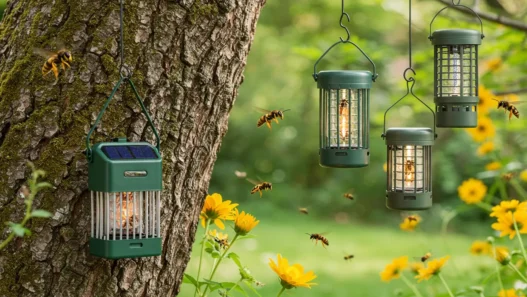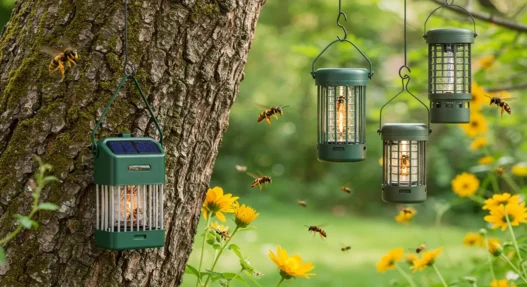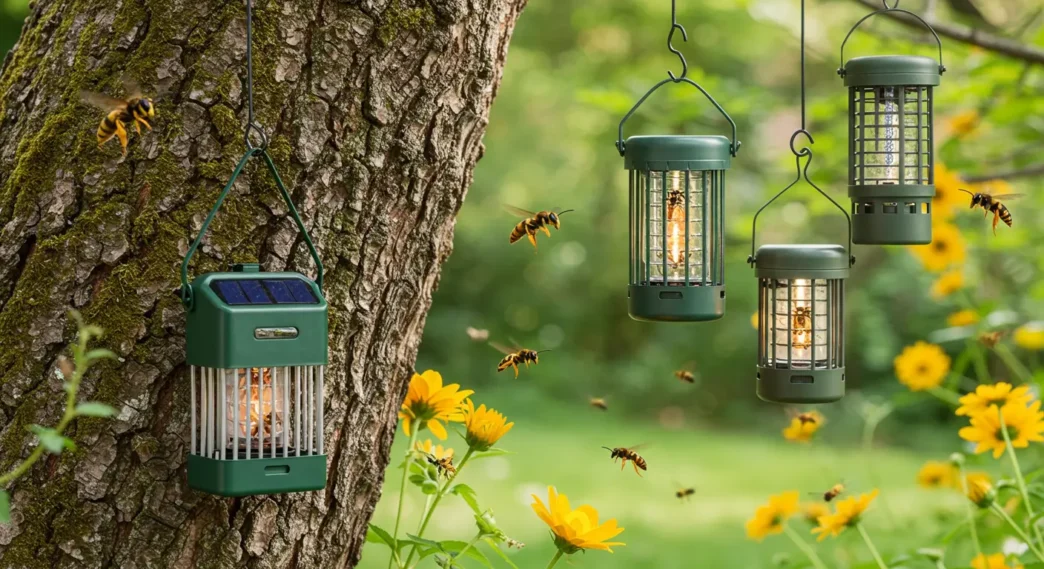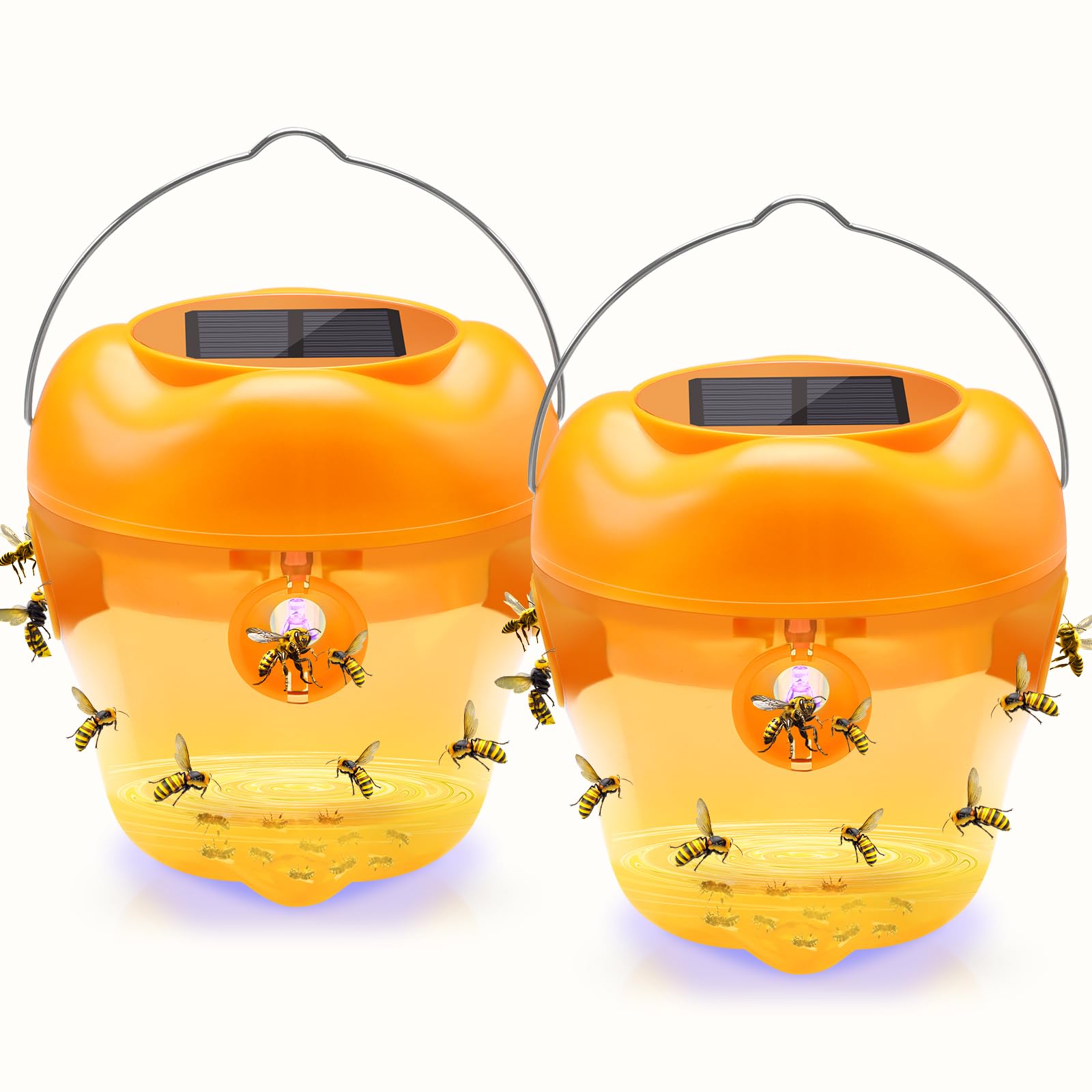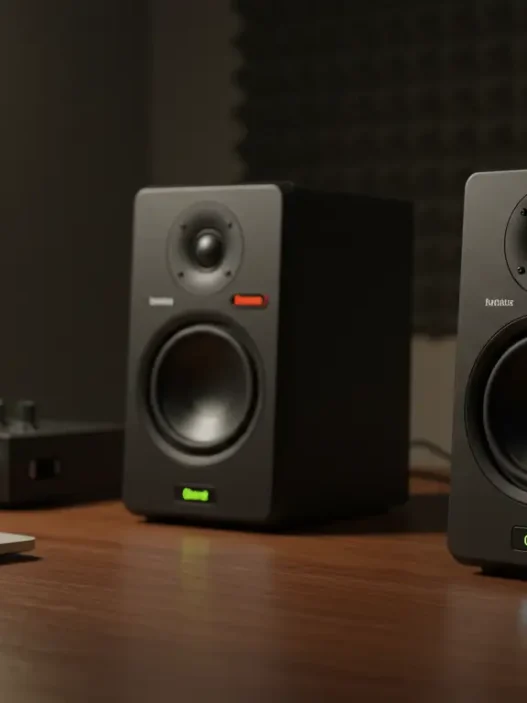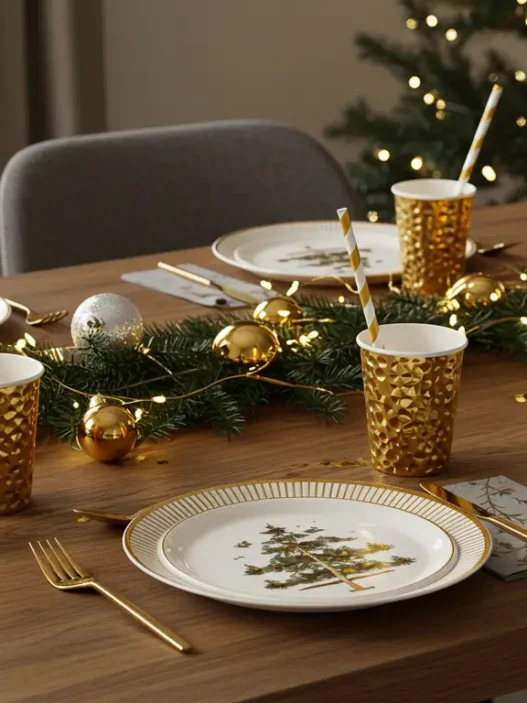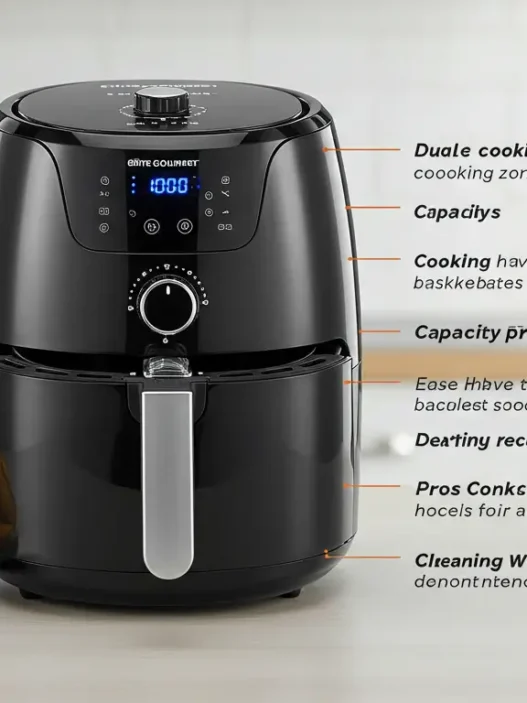Contents
- 1 Best Bee and Hornet Traps
- 2 Buying Guide
- 3 Frequently Asked Questions
- 3.1 What type of bait is most effective for wasp and hornet traps?
- 3.2 How can one create a DIY wasp trap?
- 3.3 Are commercial bee traps also effective against wasps?
- 3.4 Can yellowjacket traps effectively capture other wasp species?
- 3.5 What is the ideal liquid lure for attracting bees and wasps to traps?
- 3.6 What are the best practices for placing outdoor wasp traps?
Bee traps, hornet traps, and wasp traps are made to catch and lower the number of stinging insects around homes, gardens, and outdoor spaces.
They help people relax and enjoy outdoor activities without always worrying about getting stung. The traps use bait or scent to lure insects inside, where they can’t get out.
Using these traps can protect pollinators and cut down on the need for harsh sprays or chemicals. Each trap is designed for certain insects, so picking the right one for your problem matters.
For instance, hornet traps are made for bigger wasps, while bee traps usually focus on honey or bumblebees.
When picking a trap, check the type of bait, how simple it is to set up and clean, and if it targets the right bug without harming helpful insects. Size and strength matter too, since outdoor traps need to survive the weather.
We tried out several bee, hornet, and wasp traps to see which ones actually catch insects and don’t make life harder than it needs to be.
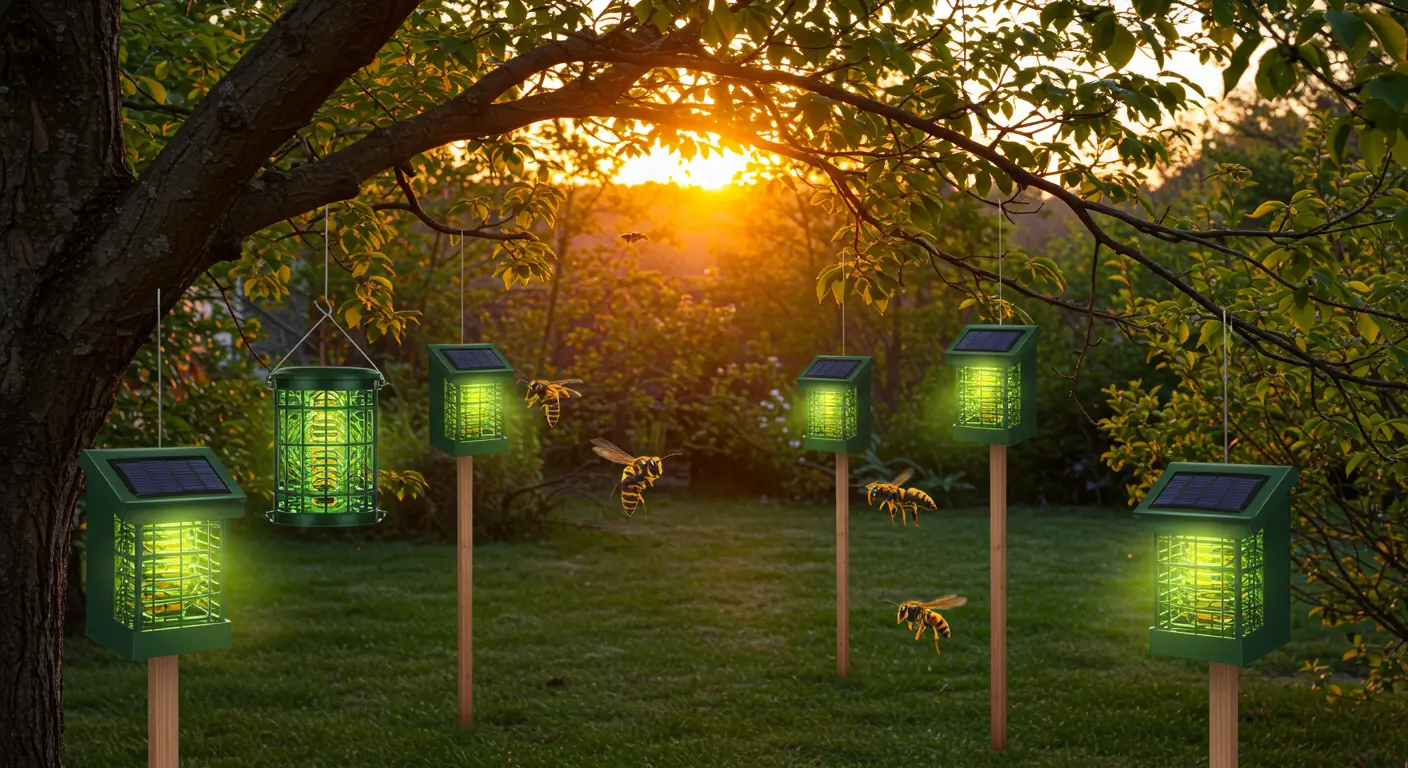
Best Bee and Hornet Traps
We’ve tested and gathered the best bee, hornet, and wasp traps out there. Here’s a list of effective, easy-to-use options for different outdoor situations.
Pirosim Solar Bee Trap 3-Pack
We found the Pirosim Solar Bee Trap is a pretty practical pick for keeping wasps and bees away from outdoor spots, and it doesn’t take much effort.
Pros
- Works well in gardens and farms for several insect types
- Solar-powered LED lights help trap insects at night
- Simple to set up, clean, and reuse
Cons
- Trap size is modest, so you might need more for big yards
- Bait needs to be topped up often
- Some plastic parts feel a bit flimsy
The solar feature is handy—it charges up in the day and helps catch bugs after dark. We liked having a few color choices to match where you hang it.
We tried sugar water and beer as bait, and both worked fine for hornets and bees. Cleaning it was quick—just soap and water, and it’s ready again.
For standard yards, one or two traps might do, but if you’ve got a major bug problem, you’ll want extras. The plastic feels thin but didn’t break, even after some rain.
RESCUE! VisiLure TrapStik for Wasps
This wasp trap does a good job catching wasps, carpenter bees, and mud daubers—no chemicals needed.
Pros
- Sticky surface catches plenty of bugs
- No strong smells or sprays
- Glue guards help avoid catching birds and other animals
Cons
- Only works where you hang it
- Needs replacing when full or dirty
- Just for outdoor use
We put this trap in the yard where wasps and mud daubers were a pain. The sticky surface really grabs the bugs, and the colors seem to draw them in.
It’s easy to hang and move if needed. Since it doesn’t use sprays, we felt okay putting it near kids and pets.
It also snagged some carpenter bees, which was helpful. The glue guards cut down on trapping harmless insects.
One catch: it only works in its spot, so larger areas need more traps. And once it’s full, you’ll need a new one.
RESCUE! VisiLure TrapStik for Wasps
This trap is a decent pick for catching wasps, mud daubers, and carpenter bees without chemicals.
Pros
- Sticky surface lasts for months
- No harsh sprays or bad smells
- Bird guards protect wildlife
Cons
- Can trap good bugs by accident
- Needs careful hanging away from pets and kids
- Sometimes less effective for carpenter bees
Setting up the VisiLure TrapStik was straightforward. Hanging it near active spots, like under eaves, brought in the most bugs.
The stickiness holds up through rain and sun. We did notice it caught some helpful pollinators, so placement is important.
Bird guards kept birds and bats away, which is a nice touch. If you want a pesticide-free option for wasps and carpenter bees, this trap is worth a look.
Outtkitywi Solar Wasp Trap
This solar-powered wasp trap seemed promising, but honestly, it didn’t work out for us.
Pros
- Solar panel charges during the day
- Easy to set up
- Made of rust-resistant plastic and stainless steel
Cons
- Ultraviolet light barely turned on
- Wasps and hornets ignored it
- Some units arrived broken
The trap has two entry tunnels and uses sugar water as bait. In practice, though, no wasps were caught after days outside.
The UV light, which should help at night, rarely worked. The materials are sturdy, but some traps came damaged, and the wide opening let bugs escape.
We left it outside for a while, but didn’t see any fewer flying insects. It just didn’t deliver for us.
Sancodee Wasp Trap 4-Pack
This trap does a fair job if you’re patient and don’t mind a little fiddling during setup.
Pros
- Catches a mix of flying insects
- Reusable, so it’s less wasteful
- Sticky surface with glue guard helps catch bugs
Cons
- Takes some work to assemble
- Doesn’t always catch stinging insects reliably
- Sticky paper needs swapping out often
The Sancodee trap helped cut down on flying pests in outdoor spaces like gardens. The sturdy plastic and bright yellow color attract bugs.
The glue guard is a bonus for snagging wasps and hornets. Assembly, though, takes patience—the pieces don’t always snap together easily, and you need to set the glue stickers just right.
It’s nice that you can swap out the sticky paper and keep using the main body. We found a bit of honey inside boosted the catch rate.
Catchmaster Yellow Jacket & Wasp Trap
This trap is reusable and pet safe, but the included attractant just doesn’t pull in many wasps or hornets.
Pros
- Reusable and easy to rinse out
- Safe for kids and pets
- Durable container
Cons
- Included attractant is weak
- Mixed results catching bugs
- Needs better bait for real results
We followed the instructions and set up the Catchmaster trap. The plastic jar is tough and easy to hang, which is a plus.
But after a few days, barely any wasps showed up. The attractant just isn’t strong enough.
If you want to use this trap, plan on buying a better lure. The reusable design is good, so with the right bait, it could work out long-term.
JNKNT Wasp Trap Bee Catcher
This trap is pretty handy for cutting down wasps and hornets outside. Setup’s quick, and the materials feel safe enough to use around the patio.
Pros
- Attracts and traps wasps without chemicals
- Holds up well in sun and rain
- Reusable—just swap out the sticky boards
Cons
- Sticky pads fill up faster than you’d think
- Assembly takes a little care
- Might not be enough if you’re swamped with wasps
We hung a couple of these around the yard. Wasps started showing up almost immediately, drawn by the bright color and sticky surface—kind of satisfying to see fewer buzzing around the deck.
The plastic stands up to rain and heat, which is a relief. No sprays or toxins, so you don’t have to worry about kids or pets getting too close.
Changing out the sticky paper is easy, just a bit more often than we expected when the wasps are bad. But, since the main trap is reusable, it saves some cash over time.
Nacoman Solar Wasp Trap
This solar-powered trap is a neat option if you don’t mind mixing your own bait. It’s reusable, though how well it works depends on what’s flying around your place.
Pros
- Solar LED attracts bugs at night
- Feels sturdy and cleans up easily (here’s a cleaning guide)
- Tapered holes make escaping tough for wasps
Cons
- No bait included—you’ll have to experiment
- LED only works after dark
- Results can vary depending on your local bugs
We tried the Nacoman trap in the garden. It took a few experiments with juice and protein baits to get it working, but once dialed in, it snagged a bunch of flying pests.
The solar light is a nice touch after sundown, though it’s not exactly a bug magnet for every species. The clear case makes it obvious when it’s time to dump it out and clean up.
It stood up to the weather just fine. Sometimes it didn’t catch many wasps, probably because of the bait or just the local mix of insects, but overall, it helped keep things under control.
Buying Guide
When you’re picking out a bee, hornet, or wasp trap, think about where you’ll actually use it. Some are best for indoors, others are clearly for the backyard. The right spot makes a big difference.
Look for traps that are easy to set up and clean. You don’t want something that’s a pain to deal with every week. Reusable parts are a bonus—they save money and hassle.
Bait is a biggie. Some traps come with bait, others let you add your own. Make sure it’s safe and actually draws in the bugs you’re after.
Know your enemy—some traps are made for hornets, others for wasps or bees. Figure out what’s bugging you before buying.
| Feature | What to Look For |
|---|---|
| Usability | Easy setup, cleaning, and reuse |
| Attractant | Includes bait or lets you add your own |
| Target Insect | Made for bees, hornets, or wasps |
| Material | Durable and weather-resistant |
| Safety | Non-toxic, safe for pets and kids |
Material matters too. Plastic is common, but metal can last longer if it’s going outside. And don’t forget about safety—especially if kids or pets are running around.
Frequently Asked Questions
Here’s what people usually want to know: how to lure wasps and hornets, easy homemade traps, and which commercial products are actually worth it. Placement and the right bait are key for catching the bugs you want.
What type of bait is most effective for wasp and hornet traps?
Sweet stuff like sugar water, fruit juice, or soda works well. Protein baits—think canned meat or fish—can pull in wasps too.
How can one create a DIY wasp trap?
Cut a plastic bottle in half, flip the top to make a funnel, and drop in some sweet bait. Wasps crawl in, but they have a tough time getting back out.
Are commercial bee traps also effective against wasps?
Not really. Bee traps are for bees, and wasps usually want different bait. Wasp traps are tuned for wasps—go with those if that’s your problem.
Can yellowjacket traps effectively capture other wasp species?
They mostly grab yellowjackets, but sometimes other wasps wander in. The bait and design are really aimed at yellowjackets, though.
What is the ideal liquid lure for attracting bees and wasps to traps?
A mix of sugar water or fruit juice with a splash of vinegar does the trick. The vinegar helps keep things fresh and brings in more insects.
What are the best practices for placing outdoor wasp traps?
Hang traps where people don’t usually gather, but close to spots wasps like—think gardens or trash bins. Try to keep them about 5 or 6 feet off the ground.

